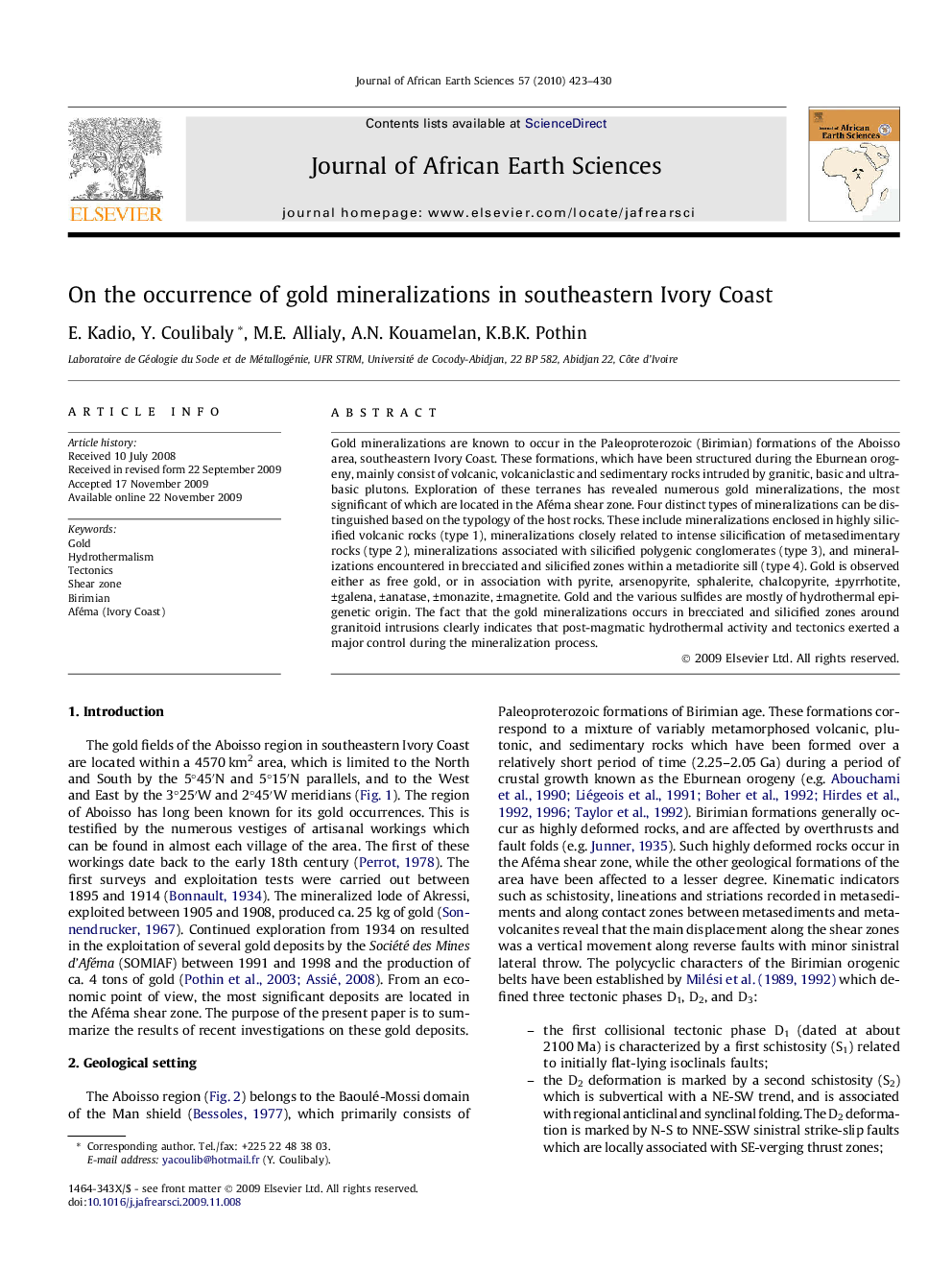| Article ID | Journal | Published Year | Pages | File Type |
|---|---|---|---|---|
| 4729310 | Journal of African Earth Sciences | 2010 | 8 Pages |
Gold mineralizations are known to occur in the Paleoproterozoic (Birimian) formations of the Aboisso area, southeastern Ivory Coast. These formations, which have been structured during the Eburnean orogeny, mainly consist of volcanic, volcaniclastic and sedimentary rocks intruded by granitic, basic and ultrabasic plutons. Exploration of these terranes has revealed numerous gold mineralizations, the most significant of which are located in the Aféma shear zone. Four distinct types of mineralizations can be distinguished based on the typology of the host rocks. These include mineralizations enclosed in highly silicified volcanic rocks (type 1), mineralizations closely related to intense silicification of metasedimentary rocks (type 2), mineralizations associated with silicified polygenic conglomerates (type 3), and mineralizations encountered in brecciated and silicified zones within a metadiorite sill (type 4). Gold is observed either as free gold, or in association with pyrite, arsenopyrite, sphalerite, chalcopyrite, ±pyrrhotite, ±galena, ±anatase, ±monazite, ±magnetite. Gold and the various sulfides are mostly of hydrothermal epigenetic origin. The fact that the gold mineralizations occurs in brecciated and silicified zones around granitoid intrusions clearly indicates that post-magmatic hydrothermal activity and tectonics exerted a major control during the mineralization process.
